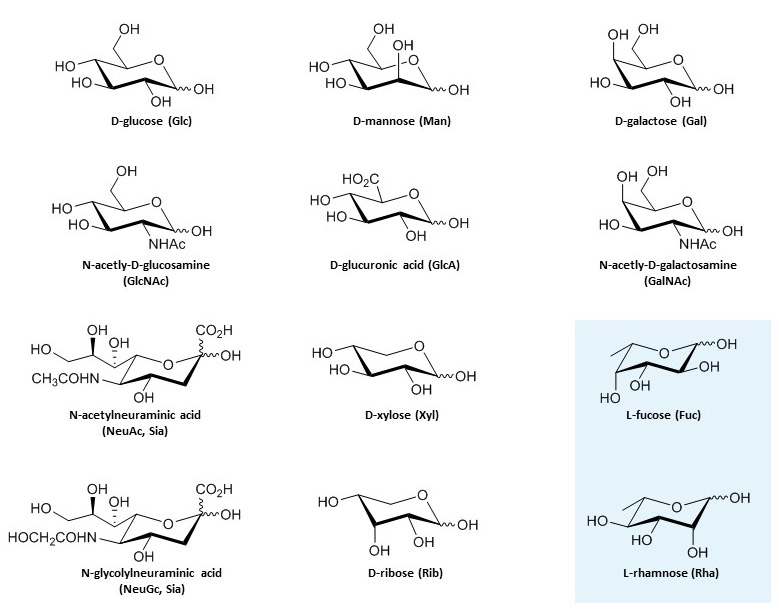Monosaccharides in biology
Glycosylation is ubiquitous on earth as it occurs in all living organisms and even in viruses. The monosaccharide alphabets applied in the respective domains of life are though quite different from each other. Paradoxically, bacteria and archaea as the smallest organisms show the highest diversity with alphabets including close to hundred distinct monosaccharides. Among eukaryotes, plants demonstrate the broadest diversity with about 25 monosaccharides. By comparison, only 11 different monosaccharides are found in animals. These monosaccharides are glucose (Glc), galactose (Gal), mannose (Man), N-acetlyglucosamine (GlcNAc), N-acetylgalactosamine (GalNAc), fucose (Fuc), xylose (Xyl), glucuronic acid (GlcA), iduronic acid (IdUA), N-acetylneuraminic acid (NeuAc), and N-glycolylneuraminic acid (NeuGc). NeuAc and NeuGc are members of the sialic acid family. Since NeuGc is the dominant form of sialic acid found in vertebrates, with the exception of primates and Old-World monkeys, the general term Sia is usually used to refer to this class of monosaccharides. More than 50 different types of Sia have been identified in living organisms.
Figure 10. Common monosaccharides. The deoxy-hexoses fucose and rhamnose mainly occur as L-stereoisomers. All monosaccharides shown here, with the exception fo rhamnose, are found in animals.
Monosaccharides must be activated to act as substrates in glycosylation reactions. The biosynthesis of activated monosaccharides will be outlined in a subsequent chapter (see donor substrates). From the 11 monosaccharides found in animals, IdUA is the only one that is not transferred by itself to glycan chains, but first added as GlcA and then epimerized on glycans to IdUA.
